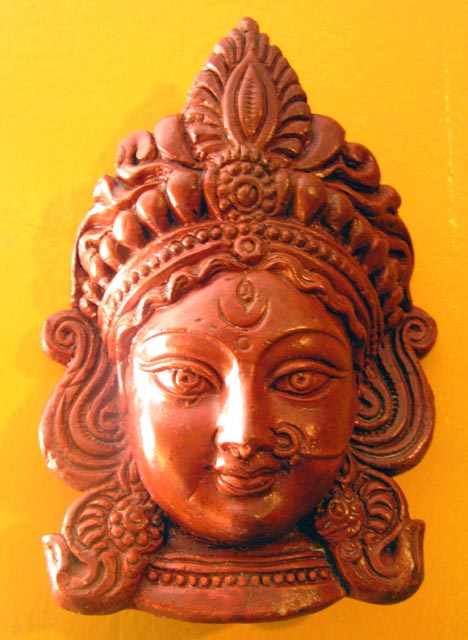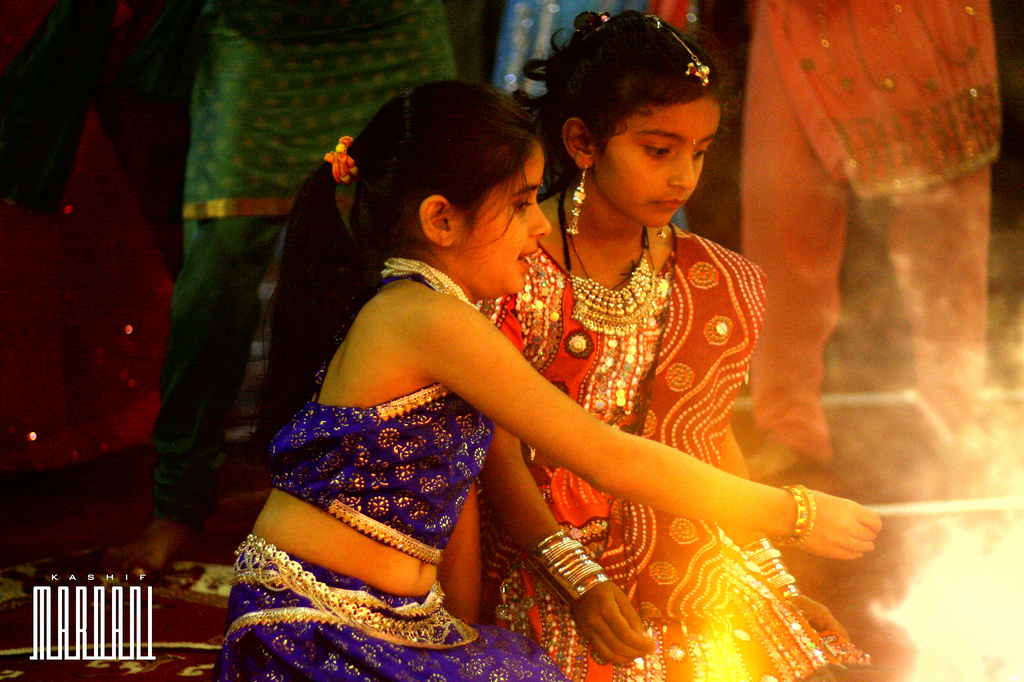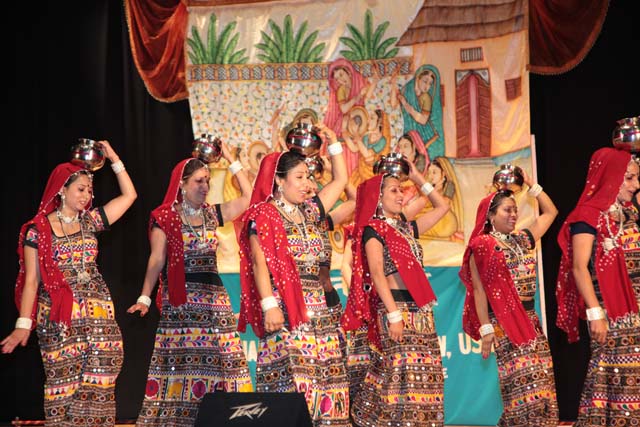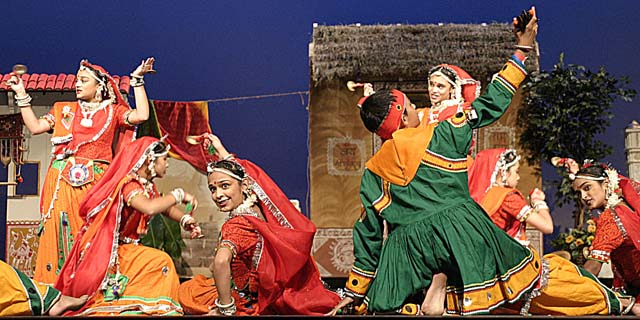3595 people reached on FB Lassi with Lavina
Kalpana Doshi, Lavina S Bhojwani and 2 others like it on FB Lassi with Lavina
297 views on LinkedIn – 7 Likes
An Evergreen article

Navratri – Durga, Lakshmi, Saraswati
They spin round and round, going faster and faster, but never breaking the sacred circle, as they clap their hands rhythmically, dancing around the Garba or earthen pot. They smile as they twirl around for in these nine nights they are celebrating the Goddess that is enshrined in all of us.
This hugely empowering dance is called the Garba and it is the centerpiece of the celebration of the Hindu festival of Navratri or Nine Nights. Is the Almighty a He or a She? Well, we lesser mortals may never know for sure but Navratri is a celebration of the female cosmic energy that makes it possible for mankind to continue – Devi, the Mother Goddess. It marks the victory of the Warrior Goddess Durga over the Buffalo Demon Mahisa, whom she fought for nine days and vanquished on the tenth, and so is a celebration of women’s power.
Known in different regions also as Navratras or Durga Puja, this festival is one of the most important ones in the Hindu calendar and culminates in Dusshera, which leads on to Diwali, the Festival of Lights. It is a time of prayers, dance and music and is celebrated lavishly all over India and by the Hindus living abroad. The diya or light is lit for nine nights and it is a time of rituals.
The first three days are devoted to the worship of the Goddess Durga, also known as Amba, Bhavani, Jagdamba and Mahakali; the next three days are dedicated to Lakshmi, the Goddess of Wealth, and the final three days to Saraswati, the Goddess of knowledge, art and learning.

Navratri – Garba and Dandia Raas
In Gujarat, a western state in India, the festival is defined by the ancient village dances of Garba and Dandiya Raas, which are even mentioned in the Vedas. In India there are big Garba and Dandiya Raas parties in towns and cities, often with major dandiya performers joining in. In the US, however, celebrations are reserved only for the weekends. Raas Garba performances and celebrations are held in many venues from school auditoriums to huge tented areas where thousands turn up on three weekends for dance, music and socializing.
The word Garba is derived from the Sanskrit word Garbadeep, which means a light inside a pot and represents the Almighty shining through the perforations of the pot, which symbolizes the universe. The garba tradition revolves around Shakti-Ma or Amba, the Mother Goddess, and garba or the clay pot also represents the womb and fertility.
The circle itself is also a very potent symbol – there’s not a beginning or an end and the end is contained in the beginning. It’s a very meaningful ritual for females because it honors the Goddess and also their own ability for creation. Garbagraha is the containment of all knowledge; it is the womb from which everything emanates.
Says Smita Amin Patel, an educator in folk arts, “It’s about parampara – the female lineage that goes back to eternity, before memory, and it’s been passed down to the females through generations.”
In the old days only male priests were allowed to conduct religious ceremonies so the women, for their part, conceived these vratas or rituals in order to partake of this time of religious activity. And what better way to do it than in a joyous manner, through dance?

Navratri in Immigrant Communities
Both Garba and Dandiya Raas have taken staunch hold in immigrant communities, handed over by grandparents and parents in a ritual that is part religious, part cultural. Garba is a religious and social event and harks back to the village traditions.
“All social events that happen in the rural areas always have a ritualistic or religious significance,” says Patel, “ Whether it’s the drawings on the walls of the huts, whether it’s the motifs you see on the women’s skirts – all of them have significance in their religious life and their vratas, the rituals they perform.”
The circle formation in garba has a great deal of symbolic and metaphorical importance because life itself is a circle, without beginning or end – an unending cycle. When you perform a garba, you do not break the circle – people go in and come out but the circle remains.
“Garba is definitely a village dance and it’s a participatory type of folk art rather than something that is learned and taught and has tenets,” explains Patel. “ It is something young women grow up with and infuse it into their being and every time there is a celebration, that is what they perform.”
Dandiya Raas was danced by Lord Krishna, the Celestial Cowherd, with the Gopis or milkmaids. “Each of the Gopis thought that Krishna was dancing with her alone because he seemed to be everywhere at the same time,” says Patel. “ But of course, he is a metaphor for the Almighty, because each one of us calls the Almighty by different names.”
While the Garba is performed by women in a circle, singing and clapping rhythmically as they worship the Goddess, in Dandiya Raas, both men and women participate, moving in two circles in clockwise and anti-clockwise directions, clicking dandiya or wooden sticks with changing partners.
FOGANA, the umbrella group for all Gujarati groups in the US organizes Garba and Raas contests to ensure that the authenticity is maintained. The children of immigrants still perform these ancient dances but also bring in variations, influenced by Bollywood, Indipop and western music. So now you also have Disco Dandiya and Disco Garba.

Indeed many colleges from Rutgers to New York University have Raas Clubs and have Garba contests. With its emphasis on female energy, the dance has a special allure even in these modern times and connects women to their strength and potency.
As the writer Chitra Divakaruni Banerjee wrote in her powerful poem, The Garba:
“We spin and spin
back to the villages of our mothers’ mothers.
We leave behind the men, a white blur
like moonlight on empty bajra fields
seen from a speeding train.”
Both Garba and Dandiya Raas have many variations, depending on regions and communities but the basics are always adhered to. The dance is at the heart of any celebration and no wedding or birth of a child in a Gujarati household would be complete without it. It is so much a part of religious ritual and social interaction, that you see women of all ages, even the elderly, performing with joy and abandon, for they are celebrating the Goddess within them.
© Lavina Melwani
This article which has been updated, first appeared on Beliefnet.com
Related Articles:

1 Comment
Congratulations to All the 33 miners and Rescue Team in Chile
They have shown integrity, hard work and support
This historical event took place during Navratri Season
The families and Rescue Teams have definitely been blessed by Goddess Durga, Laxmi and Saraswati
Once again congratulations to the HEROES.